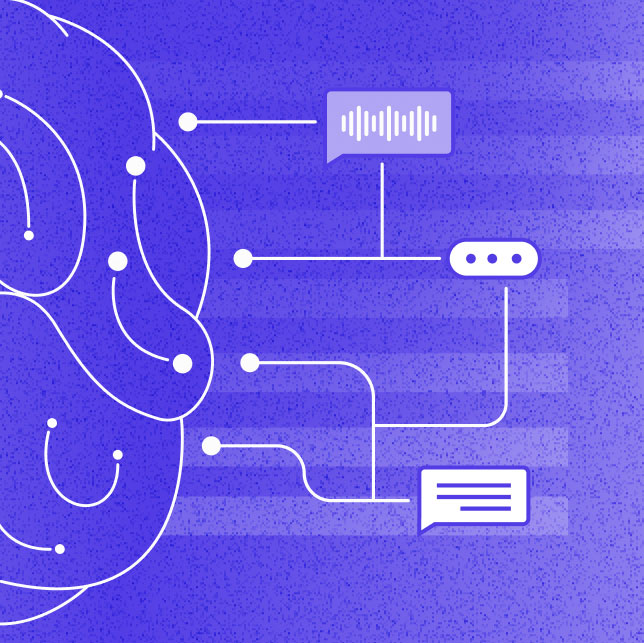There’s no doubt that the pandemic has created a landscape that will continue to encourage innovation and technological adoption. Digital transformation has evolved from a buzzword to an imperative. At the start of the pandemic, we witnessed two years’ worth of digital transformation within the space of two months. Initially, companies were happy to settle for basic collaboration tools like video conferencing to keep them connected. But with the pandemic dragging on and the nature of work having changed fundamentally, companies are now expecting more from their collaboration tools. A custom virtual background is a neat feature but project management tools and interactive whiteboards will provide more of a productivity boost. COVID-19 has accelerated the shift to digital for many and has led to a boom in remote work and the technologies which underpin this new reality.
Amidst this sea of change, what do companies want from their tools to help their employees be more productive?
In framing how companies have embarked upon their digital transformation journeys, Maslow’s Hierarchy of Needs seems an appropriate way to depict that journey.

At the height of WWII, psychologist Abraham Maslow proposed a “hierarchy of human needs,” often depicted as a pyramid. When a lower need is met, the next need on the hierarchy becomes the focus of attention. To aid in sequencing the transition to the future of work, companies can use the Productivity SaaS Edition of the Hierarchy of Needs to determine where they are on their transformation journey and what tools and technologies they can adopt as they progress through the levels.
Hierarchy of Needs (Productivity SaaS Edition)

1. Communication
Communication is an essential human need. With the onset of the pandemic, employees suddenly had to shelter in place and lost the benefits of serendipitous interactions and watercooler conversations with coworkers. Tools like Teamflow have emerged which help remote workers feel like a team again through their virtual office solution. Even if communication tools have introduced friction to initiate an interaction, they are clearly the first priority for companies to help companies communicate seamlessly.
Leading tools: Zoom, Slack, Microsoft Teams, Tandem, Around, Remotion, Loom, CloudApp, InSpace, Filo
2. Collaboration
Once basic communication needs are solved, companies move on to the next challenge. The pandemic has forced organizations to adapt their collaborative processes or lose productivity and be left behind. Synchronous and asynchronous collaboration is equally needed—iterating on a document by sending versions as attachments over email is no longer enough. Some tools are now extending their reach and integrating directly with calendars or even creating shared workspaces for collaboration on meeting notes. Companies need to adopt tools that facilitate work collaboration in real-time to maintain their pace of innovation.
Leading tools: Google Workspace (formerly G Suite), Office 365, Teamflow, Notion, Coda, Roam Research, Mem (Supernote), Hugo, Todoist, Pitch, MURAL, Miro, Lucidspark, Lucidchart, Whimsical
3. Coordination
Now that employees can communicate seamlessly and collaborate on deliverables in real-time, companies need to chain together the outputs to deliver critical, high impact projects on time. With workforces more dispersed than ever, it’s vital to be able to connect the dots between individual or team contributions and monitor progress towards project deliverables. Coordination of people in different departments and timezones was a challenge prior to the pandemic and is only going to get worse with distributed teams inevitably becoming the norm. Rather than being over-reliant on virtual meetings, email, and messaging apps to address these challenges, businesses should look for “tooling that provides visibility, trackability, automation, reporting and planning around work initiatives for which synchronous conversation and asynchronous messaging should be secondary support, not a replacement,” writes Chris Marsh, Research Director, Workforce Productivity and Collaboration at 451 Research. Innovators that can solve this need will be successful.
Leading tools: Smartsheet, Asana, Airtable, Trello, Wrike, Monday.com, Workfront, Nifty, ClickUp, Qatalog
4. Automation
Once companies have digitized their work how do they speed up workflows and generate efficiencies? Companies must ask how to streamline input and coordination of work across tools, teams, functions, and departments. The role of automation is not to reduce headcount, it’s to empower existing headcount to do more by augmenting their capabilities. Vendors that can create tools and technologies which free up hours for focus time on creative thinking have much to gain during this period of immense transformation.
Leading tools: Robotic Process Automation companies (UiPath, Automation Anywhere, Blue Prism), iPaaS (Zapier, Dell Boomi, Workato, Tray.io, Celigo), Pipefy, Kissflow, Tonkean
5. Alignment
Much like the final stage of self-actualization in Maslow’s hierarchy, this level is about people feeling aligned and doing their best collective work, not just individual contributions. There must be clarity and alignment around company goals to ensure everyone is moving in the same direction. A business is self-fulfilled once everything is digitized, workflows are captured and the people behind those projects have clarity on the goals and feel empowered. Plug everything into a platform to align on strategic initiatives and let the priorities cascade down. Even better, now it can all be tracked since much of the work is being codified in the variety of tools being used.
Leading tools: WorkBoard, Ally, Gtmhub, Betterworks, Koan, Shift
Putting humans at the heart of change
This is meant to be a commentary about the tools and technologies we adopt in these times, but we can’t ignore the human aspect of what has happened. After all, Maslow’s motivational theory is a model of human needs. The notion of work has fundamentally changed—people are no longer tethered to an office but they are stuck in their homes with the lines between their work and personal lives being blurred. The concept of “work-life balance” is taking a back seat to “work-life integration” and while companies can think about productivity gains it’s also time to think about investing in your workforce.
There has been a lot of speculation about the next technology “platform shift” (much like cloud or mobile in this past decade) but what if the next platform shift isn’t technological but human? Distributed, dispersed, remote; call it what you want but every person and every company will need to rethink the tools and technologies they use and the way they work. This new paradigm will challenge existing tools to innovate and create opportunities for newcomers to establish themselves quickly.
Reimagining the way we work
This hierarchy isn’t meant to be exhaustive but merely a guide in the otherwise broad and crowded “productivity” category of SaaS. We’ve already seen a reinvention in some of the more mature levels of the hierarchy—some products are embedding functionality from other tools (e.g., Notion and Coda) and others of the low-code, no-code variety are even giving people the ability to build their own tools (e.g., AppSheet, Retool). What’s certain is that there will be further change as companies begin forming permanent use cases inside their organizations and begin demanding more innovation from their technology vendors.
Companies will inevitably reassess their technology stack as they move further along their transformations and up the hierarchy of needs. They must ask how productivity tools interact and explore if there is a way to reimagine the ways we are working together instead of taking a piecemeal approach and gluing everything together. Digitization is not the same as digital transformation and only when we realize this will we be able to accomplish everything we set out to do and feel empowered to do our best work.
As companies begin to firm up their return to work plans it’s inevitable that there will be stumbles along the way. Companies and employees will need to draft new “social contracts” that allow people to incorporate in-person into their lives again. We shouldn’t dread going back to the office or staying remote—hopefully we can strike a balance that brings out the best in us. The paradigms and perceptions of how we work have permanently shifted but thankfully we now have a plethora of tools to help us along the way.
If you’re a founder solving any of these needs, I’d love to hear from you.
Jean-Paul (JP) Sanday is a partner at Menlo Ventures who invests at the inflection stage. Focused on vertical SaaS and, more broadly, enterprise software, JP is particularly excited about companies defining the future of work, infusing our lives with intelligent automation and democratizing data analytics. His favorite part of the…







